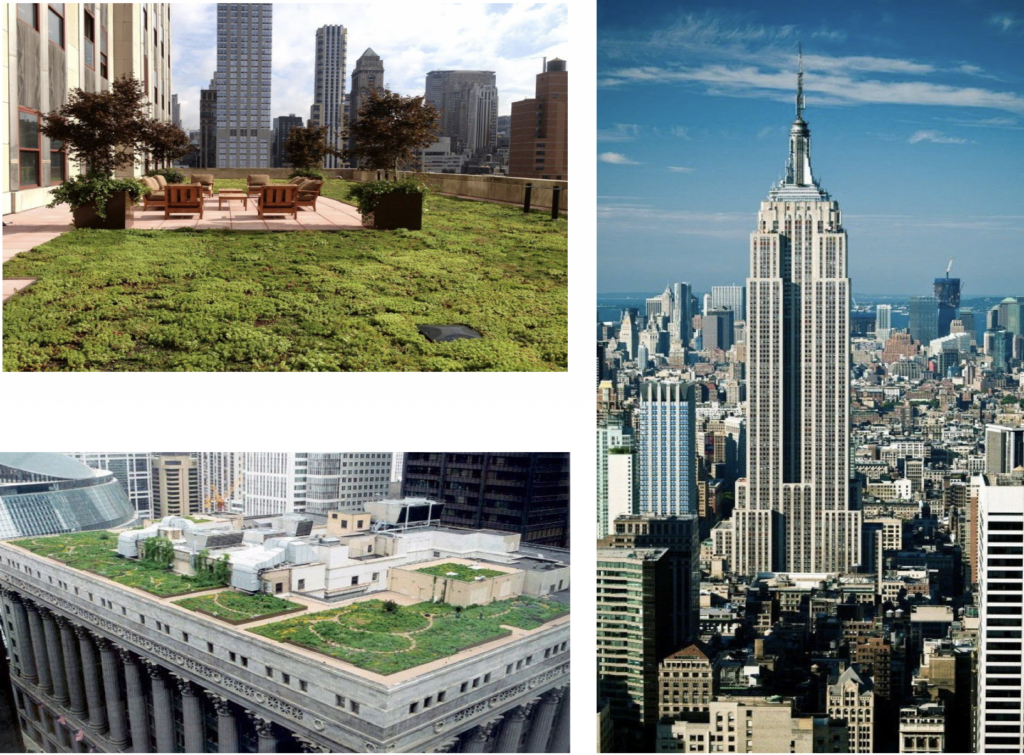By: Amy Menist
View the original article here
Environmental, social and corporate governance (“ESG”) practices are becoming an increasingly significant topic for businesses and a vital investment criterion for real estate capital sources. Increases in the frequency and intensity of severe-weather-related events are forcing companies to assess property vulnerability and resiliency to proactively manage risk and mitigate the effects of climate change. A company’s corporate social responsibility is just as important because it draws attention to community outreach and talent development. Furthermore, with proper governance in place, management can implement and assess its policies, goals and reporting efforts for their ESG initiatives. Due to these compounding matters, real estate companies now have an increasing responsibility to perform climate-risk due diligence; assess its corporate social responsibility initiatives; and develop, implement and govern its ESG policies. As a result, investors and lenders are beginning to factor a company’s ESG policies into their decision-making processes because they want to ensure the business is developing sustainable plans to combat the effects of climate change; reduce costs; attract tenants; create ways to support the community; retain talent; and properly set, monitor and report on the company’s goals. What exactly is ESG, and how does it influence investor and lender decisions within the real estate sector?
Environment
The environmental aspect of ESG represents management’s responsibility to assess each property’s vulnerabilities, resilience and fortification with respect to its climate and to investigate the environmental impact of operating its properties. While reviewing or developing a building portfolio, it is crucial for management to perform an environmental analysis of each property to determine each building’s vulnerability and/or resistance to severe weather (e.g., hurricanes, flooding, extreme heat or cold, wildfires, tornadoes, blizzards) as well as to consider the environmental and community impacts associated with property development.
Using a variety of tools, management can establish and track key environmental factors associated with property development and operations, including the amount of energy used, the usage and/or possible contamination of water, the amount of waste generated and/or avoided in favor of recycling initiatives, and the building’s impact on air quality and the surrounding ecosystem. By evaluating a property’s environmental impacts, companies can be proactive about mitigating risk and assuring proper protocols are in place—not to mention saving money.
Management also should consider weather forecast predictions and climate migration trends in its analysis because climate change poses both physical and transitional risks that can have a substantial financial impact on a real estate business. As outlined in “Climate Risk and Real Estate Investment Decision-Making,” an article published by Urban Land Institute, “Physical risks, such as catastrophes, can lead to increased insurance premiums, higher capital expenditure and operational costs, and a decrease in the liquidity and value of buildings. Transitional risks—which center on the economic, political and societal responses to climate change—can see locations and even entire metropolitan areas become less appealing because of climate-change-related events, leading to the potential for individual assets to become obsolete.” Accordingly, climate migration presents a legitimate concern to real estate investors because climate relocation will lead to significant shifts in demand for real estate as individuals respond to environmental changes.
ESG initiatives are gaining significant attention among regulators and the Biden administration due to a rise in the necessity of, and public interest in, sustainability. In January 2022, the Biden administration launched a coalition of states and local governments to strengthen building performance standards. This partnership, consisting of 33 state and local governments, focuses on providing “cleaner, healthier and more affordable buildings.” The new commitments to design and implement more efficient building performance standards are intended to “accelerate progress toward reducing buildings emissions, advance climate action and environmental justice, create good-paying union jobs, lower energy bills for consumers, keep residents and workers safe from harmful pollution, and cut emissions from the building sector.” Property owners and operators must closely follow the developments of these governmental policies to stay current with their ESG initiatives.
Additionally, as part of the government’s initiative to strengthen building performance standards, the Department of Energy (“DOE”) and the Environmental Protection Agency (“EPA”) announced technical assistance opportunities to design, measure and manage local building-performance policies. For example, the “Biden-Harris Administration Launches Coalition of States and Local Governments to Strengthen Building Performance Standards Whitehouse Statement” outlines the following:
- The DOE will share best practices for state and local governments that are adopting building performance standards, including public- and private-sector financing options, and will also provide analytical support to examine how policies targeting emissions reductions in existing buildings can pave the way for minimum new-construction building energy codes.
- There will be enhanced support from the EPA Climate Protection Partnerships Division. The EPA will support policy development and implementation, including through analysis and recommendations of metrics and best practice toolkits. The EPA will provide insight into current building energy use data as the foundation for jurisdiction-specific analysis and target setting and will enhance ENERGY STAR Portfolio Manager to provide new policy tracking and reporting capability and will assist jurisdictions in its use. The EPA will also provide new tools that calculate localized greenhouse gas emissions to inform reporting, compliance and assessment.
High-performing buildings are not only good for the environment, but they are also good for the bottom line. Although capital is needed to build or retro fit such properties, companies that invest in ESG initiatives often see a quick return because high-performing buildings attract higher occupancy rates, thereby generating more revenue and decreasing the amount spent on utilities, insurance premiums and repairs due to severe-weather-related events. Additionally, there are incentives available at both the federal and state levels that are issued to businesses to help make the initial investment more attractive. Businesses today should assess their building portfolios, evaluate their alignment with industry benchmarks and leading practices, evaluate future trends and possible policy changes, and identify gaps and opportunities. With a thorough understanding of the company’s current position, its plans and stakeholders’ expectations, management can prioritize goals and set efficient ESG targets.
Businesses can develop appropriate strategic ESG plans by using climate risk scorecards, performing property vulnerability and resilience assessments, mapping physical risk, and evaluating benchmarks established by organizations such as the Sustainability Accounting Standards Board, Global ESG Benchmark for Real Assets or ISO 14001, as well as state and local governmental regulations.
Social
Strong ESG policies and procedures can help build trust, attract and retain employees and tenants, and prevent costly mishaps while meeting community needs. Social initiatives, which are often assessed at the partnership and overall company level, represent the company’s corporate social responsibility. Today, the need for companies to evaluate their social actions is great because employees are demanding ESG services and better working conditions. These include demands for ensuring diversity, equity and inclusion throughout the business and governing board; developing ways to attract, retain and promote employees; and implementing an effective code of conduct. Additionally, businesses could further enhance their social responsibility by ensuring all employees have a safe and clean work environment, requiring all vendors and contractors to follow the company’s code of conduct, hiring contractors and vendors whose social responsibility is in line with their own social efforts, and assigning an internal resource dedicated to the ESG initiatives. Businesses today excel from the use of strong social responsibility practices because they incorporate diversity and inclusion, recruitment, talent development and mentorship programs, health and wellness, and create a conducive work environment for everyone throughout the company.
Tenants today are also considering companies’ ESG initiatives as a deciding factor for their tenancy because they want to rent high-performing spaces from a socially responsible company with strong ESG policies. Therefore, it is imperative that management evaluates its social responsibility with respect to the surrounding community. This could include a company publicly displaying its ESG policies, promoting its progress in sustainability efforts, and asking its tenants for feedback. Furthermore, tenants want affordable and accessible space, quality access to/from the property, and equal access to features and amenities within the community including good schools and shopping centers. By management taking into consideration tenants’ desires and opinions, it will help the business improve tenant attraction and retention and, thus, generate more rental income.
Governance
ESG is metrics-based with documented evidence. Consequently, it’s necessary that there are strong governing practices in place to help the company report and oversee its business performance, track progress, and strengthen data management and analytics. Management has a responsibility to implement the ESG policies and procedures as well as maintain and evaluate its progress and standards. Therefore, governing practices need to be in place to enable the company to perform due diligence and collect data and documentation to further improve planning efforts. Investors and lenders expect companies to track their environmental and sustainability metrics at the asset level and provide transparent reports that support the process for making meaningful and effective ESG plans. Through use of effective governing practices, management can perform decisive analytics, track progress, and create accurate and transparent reports on its corporate social responsibility and ESG efforts that showcase sustainability evidence to attract investors, lenders and tenants.
Companies often struggle with collecting data to support their ESG plans. However, data is in high demand because it enables companies to understand where change or innovation is needed. There are a variety of software and tools available that can help management efficiently document, track and assess its ESG progress. New emerging property technology (“proptech”) and proptech companies are designed to help streamline the gathering of data and aid in auditing and reporting for real estate. Using proptech, companies can review real-time data on energy usage, determine if environmental and sustainability opportunities exist, and quantify and standardize resource consumption to maintain safer and more valuable real estate. Through use of proper and effective governing practices, companies will develop a more efficient work environment backed by strong and accurate data, thus fostering a greater likelihood they will successfully achieve their ESG initiatives.
ESG and Investors
ESG is shaping and influencing real estate valuation and, therefore, gaining in importance among capital providers. Investors today use a variety of tools to determine future opportunities, and ESG policies are getting higher on their due diligence checklists. Although not a deciding factor, a business’s ESG plans can significantly impact an investor’s decisions. Through developments in technology and an increased transparency in reporting, investors now have more insight and want to know that businesses are forward looking and have sustainable business practices in place. By assessing a business’s ESG plans, investors can assess the risk versus the rewards as well as potential growth areas. Additionally, investors often believe the more proactive a company is with its ESG initiatives, the more attentive and responsive the company will be in mitigating risks. Accordingly, a strong ESG policy adds value to the investment because it attracts tenants, reduces operating costs and increases capital demand.
Debt and equity capital providers are incorporating the analysis of ESG and climate risk in their transaction due diligence. Recent floods, fires and extreme heat are forcing tenants (and their insurers) to assess property vulnerabilities. As confirmed in EisnerAmper’s article, “Commercial Real Estate 2022 Outlook: Fixing the Horizon to Navigate Through Change,” real estate companies should consider:
- Hodes Weill’s 2021 Institutional Real Estate Allocations Monitor indicates that 49% of investors globally consider the ESG policies of the investee.
- ULI’s 2022 Emerging Trends in Real Estate indicates that 82% of survey respondents consider ESG elements when making operational or investment decisions.
- A recent report by JLL showed that office tenants are considering an owner’s ESG activities when selecting space, focusing particularly on building sustainability and efforts to create a healthy work environment, including quality air flow.
- A Cushman & Wakefield study found that sellers are achieving 25% higher prices per square foot in Class A LEED-certified office buildings and 77% higher prices in Class B LEED-certified office buildings versus non-certified buildings.
Real estate companies and their management must develop a plan for prioritizing the implementation of ESG policies and initiatives because capital providers look for climate data and disclosures as well as resiliency, proactiveness and a property’s ability to attract tenants. Furthermore, as governmental policies are being implemented and net zero targets are set for 2050, capital providers need to know real estate companies are forward looking and performing due diligence to assess the impact of net zero goals on its assets to achieve new ESG standards. As a result of a growing trend and strong push for a decrease in the carbon footprint worldwide, there is an increase in investor demand for ESG policies that will significantly impact their decision-making process.
Most businesses today are looking to limit their impact on the environment by following real estate trends, moving away from fossil fuels, using renewable energy and developing net-carbon-zero real estate efforts. For property developers, this formidable endeavor includes management mapping out the ideal location using weather forecast predictions and climate migration trends, while also developing properties with the lowest emissions level possible and then offsetting the emissions created by finding ways to reduce and/or reuse waste and utilize renewable energy sources. Resilience is the key because it generates value. The initial investment will be repaid after these companies attract tenants and capital on the revenue side and reduce operating costs.
The need for socially responsible business practices will continue to grow because there are strong demand indicators for ESG and sustainability services. This, it is imperative that real estate companies continue to be forward looking and implement ESG initiatives to protect their assets. Effective ESG policies are directly correlated with stronger financial performance and better risk management because they provide companies the opportunity to mitigate risks and appease investors. Creating sustainable business practices, while preparing for implementation of future regulations, will help companies be environmentally conscious and socially responsible in conducting their day-to-day business, while simultaneously aide them in mitigating risks associated with climate change, improving relationships with investors and increasing overall long-term financial performance.




